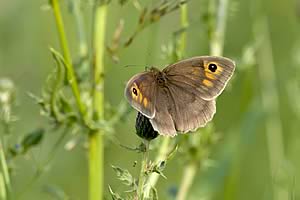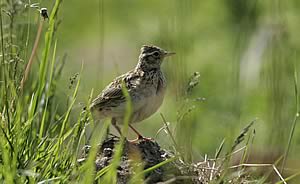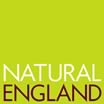 |
|||||||||
|
|||||||||||||||||||
|
|
Springtime Tips for Farmers in Stewardship Agreements One traditional springtime ritual includes getting up before dawn on May Day and going outside to wash your face in dew – which according to folklore keeps your complexion beautiful! Farmers in Entry Level Stewardship (ELS) can take some much simpler steps in May and June to help keep their farms productive and attractive for wildlife.
Natural England has five springtime top tips for ways Entry Level Stewardship can benefit local wildlife during the next couple of months. TIP 1: Encourage late flowering of nectar-rich flowers, such as red clover and bird’s-foot trefoil - and meet the peak demand from bees - by cutting half the area of your nectar flower mixture to 20cm between 15 June and 7 July (but don’t cut if ground-nesting birds are present). Benefits: Nectar flower mixtures provide an important food source and habitat for nectar-feeding insects such as bumblebees and butterflies. Evidence shows that farmers who plant ELS nectar mixes rather than grass margins can attract up to 14 times more bumblebees. You will also be providing insect-rich foraging grounds for farmland birds such as tree sparrows and skylarks as they feed their young.
TIP 2: Maintain any undersown grass leys until the crop is harvested, which should be not be before 1 July. Benefits: The addition of a grass ley as an understory to the cereal crops increases the diversity of the habitat; making them insect-rich foraging grounds for birds such as grey partridges and corn buntings. It also benefits farm wildlife such as the brown hare. The undersown crop can also help prevent pollution by reducing soil erosion and run-off at source.
Benefits: Through the use of Campaign for the Farmed Environment (CFE) voluntary measures and Environmental Stewardship options, a number of simple management measures can be put in place that will make a huge difference to farmland birds, such as skylarks, grey partridges, tree sparrows and yellowhammers. CFE key target options include providing game strips and leaving weedy overwintered stubbles.
TIP 4: Any rolling or harrowing on your permanent grassland option fields will now need to wait until 1 June, as there is a closed period of 1 April to 31 May for these operations. This also applies to any cutting that may be required on these fields. And when you start cutting, don’t forget to remove any grass cuttings. Benefits: By managing permanent grassland with low or very low inputs, you can help reduce soil erosion and run off from your farm. Permanently grassed areas will slow down the flow of water on natural drainage pathways and reduce the channelling of runoff water, which can produce rills and gullies. Grassland managed or retained with little or no fertiliser has a greater value to wildlife, such as butterflies and bees, and will sustain a wider variety of plants. Permanent grassland is also an important historical feature demonstrating how farming has shaped our landscape over the centuries.
TIP 5: Ensure that haymaking fields are closed off from livestock by 30 May, and cut for hay after 5 July. Benefits: Hay meadows that are rich in wild flowers are a rare and irreplaceable habitat. Closing fields off from grazing livestock allows broad-leaved plants to flower and seed, providing summer food for seed-eaters like linnets, and nectar and pollen for insects. The continuation of haymaking in the uplands not only ensures that traditions and landscape character are not lost, but it also provides a greater diversity of wildflowers, habitats for insects and mammals, and food for birds. Natural England will present at many national farming Shows this year, where Advisers will be on hand to answer queries about Environmental Stewardship. Visit our stand at these events: · Beef Expo – 26 May – Newark Showground · Cereals – 16 & 17 June – Boothby Graffoe, nr Lincoln · Dairy and Livestock Show – 6 & 7 September – NEC Birmingham ELS is open to all farmers across all farming types, including the uplands, to deliver simple yet effective environmental management. ELS requires a basic level of environmental management and farmers can choose from a wide range of more than 80 management options. These cover all farming types and include things such as hedgerow management, stone wall maintenance, low input grassland, buffer strips, maintenance of traditional farm buildings and arable options.
|
||||||||||||||||||

|
|
||||||||||||||||||
| home | agri-services | pedigree
pen | news | dairy | beef | machinery BPS | property | organisations | site map |
|||||||||||||||||||



